@kryptand/ddd v0.4.8
This is a fork of https://github.com/angular-architects/nx-ddd-plugin bringing DDD to Stencil Web components
This plugin installs some schematics which automate slicing your Nx workspace into domains and layers according to Nrwl's best practices and our ideas about client-side DDD with Angular:
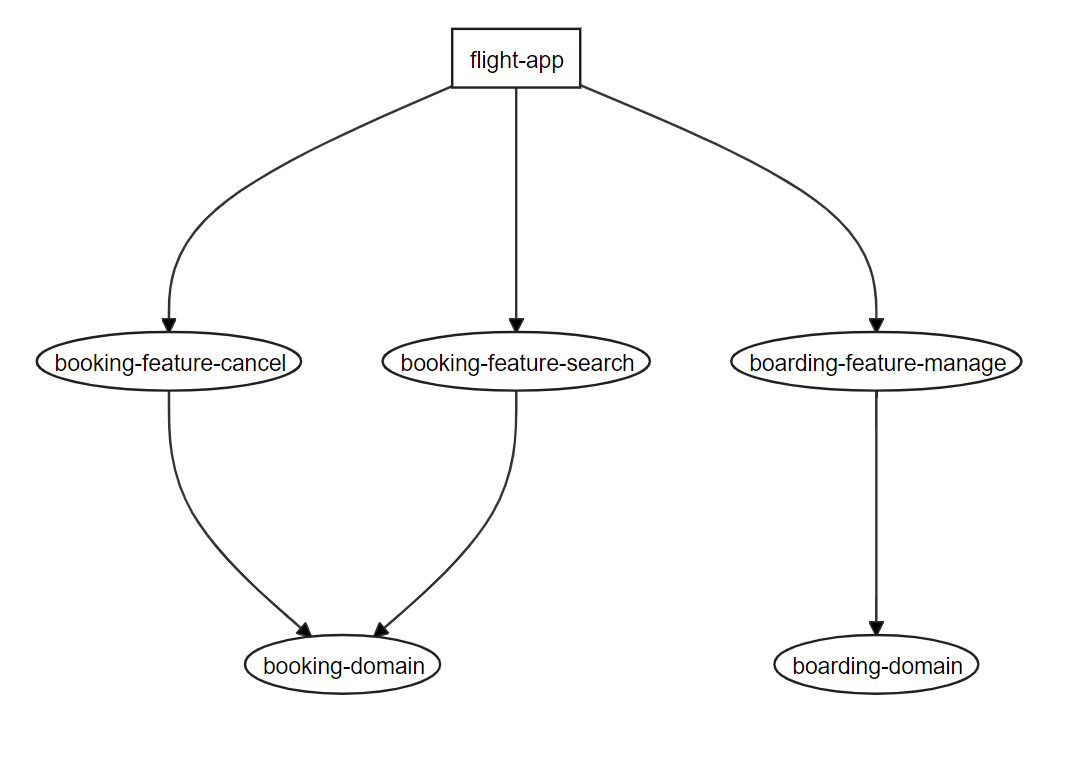
The generated access restrictions prevent unwanted access between libraries respecting layers and domains:
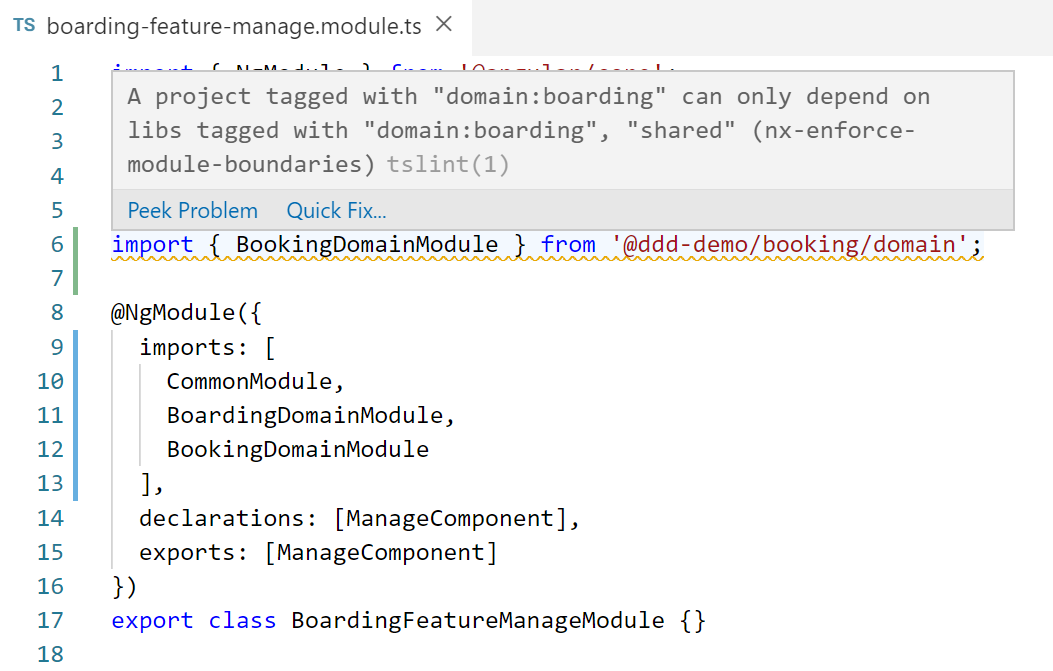
Features
- 🗺️ Generating domains with domain libraries including a facades, models, and data services
- ⚙️ Generating feature libraries including a feature components using the facades
- 🙅♂️ Adding linting rules for access restrictions between domains as proposed by Nrwl
- 🙅♀️ Adding linting rules for access restrictions between layers as proposed by Nrwl
Usage
Add this plugin to an Nx workspace:
ng add @angular-architects/dddAdd domains and features:
ng g @angular-architects/ddd:domain booking
ng g @angular-architects/ddd:domain boarding
ng g @angular-architects/ddd:feature search --domain booking --app flight-app --entity flight
ng g @angular-architects/ddd:feature cancel --domain booking --app flight-app
ng g @angular-architects/ddd:feature manage --domain boarding --app flight-appThis example assumes that you have an app flight-app in place.
These schematics also wire up the individual libs. To see the result, create a dependency graph:
npm run dep-graph
To see that the skeleton works end-to-end, call the generated feature component in your app.component.html:
<booking-search></booking-search>You don't need any TypeScript or Angular imports. The plugin already took care about that. After running the example, you should see something like this:
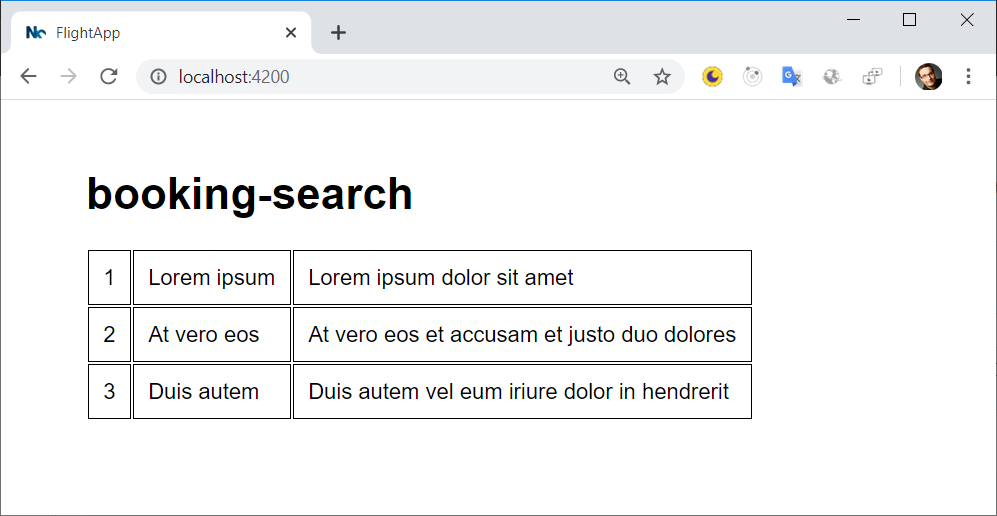
Generated Structure
The included schematics generate a folder for each domain. This folder contains feature libs as well as a library with the domain logic:
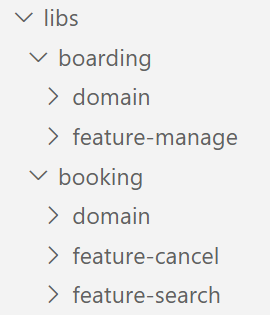
The domain layer is subdivided into three parts:
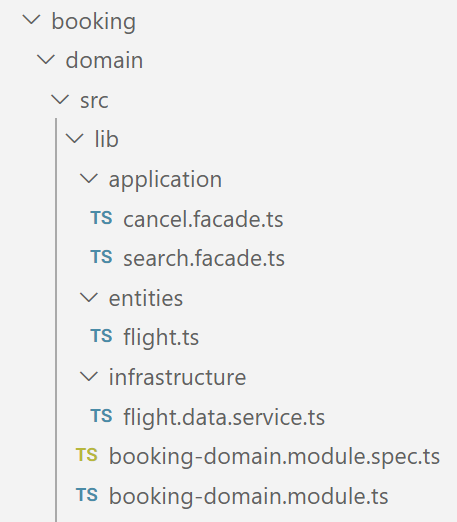
Generated Structure for Domain Library
- application: Contains application services. This is a DDD term for what we call facades in Angular nowadays. They orchestrate everything for a use case given so that a feature component only needs to communicate with one such facade. Also, it hides details for state management. While the generates facades just use a
BehaviorSubject, feel free to add a library like NGRX underneath. As such a modifications changes nothing from the component's perspective, you can use facades to introduce NGRX later on demand. - entities: Client-side data model including logic operating on it (like validations).
- infrastructure: Services for communicating with the backend.
Consider Automatically Checking Access Restrictions
As the access restrictions defined with Nx use linting, you can check against them at the command line too. Hence, you might consider including this into your automated build process.

Example Application
see https://github.com/angular-architects/ddd-demo